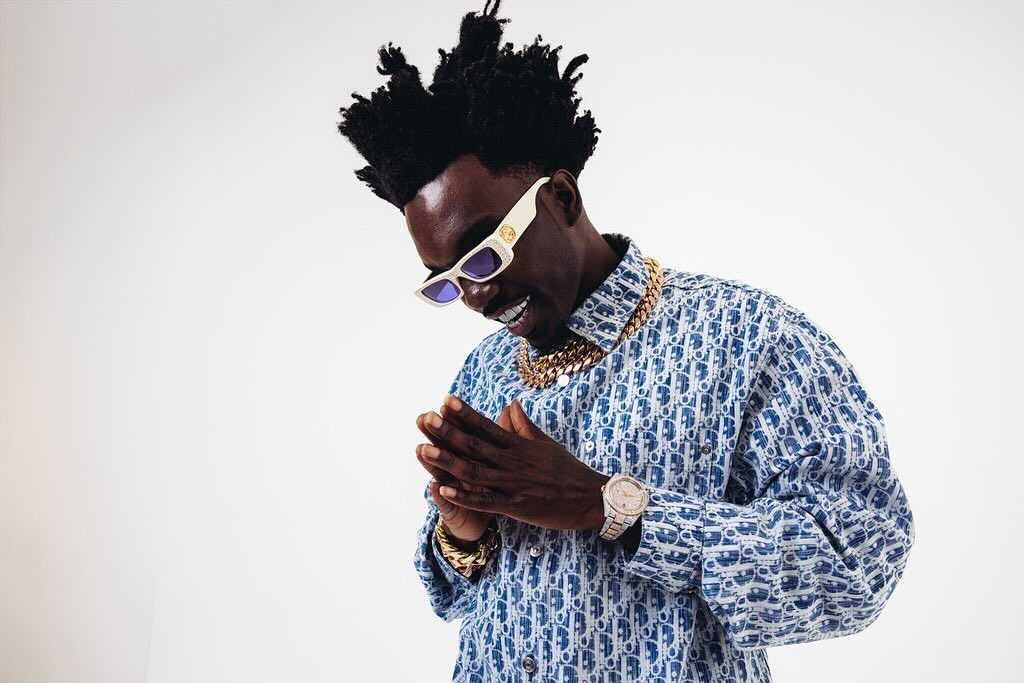The Bobby Fishscale Interview: Signing to Roc Nation, Getting the Key's to his City, & his Artistic Evolution
“There’s a lot I’ve learned about myself, making music, and life. this project puts it all together. I’ve dealt with a lot growing up and now, to have a project where I get to collab with artists like Juicy J and Quavo is a big deal.”
Photo Courtesy of Roc Nation
If you’re tapped into Florida hip-hop, you’ve undoubtedly heard of Bobby Fishscale. The Quincy native has been making waves since he released “Hov Flow” in 2019 which sampled JAY-Z’s “Renegade” and boasted Bobby’s elevated artistry. A year later the rapper would sign to JAY-Z’s Roc Nation and watch as everything he mused over on his 2019 mixtape Big Fish began to manifest into reality.
This November, Bobby released an extremely polished 7-track EP titled The Evolution which showcases a wide array of star-studded features from Juicy J, Quavo, Zaytoven, Mozzy, and Kalan.FrFr. The project is Bobby’s second full EP release following his 2020 EP The Last Re-Up and mixtapes, Super Fishy, and Da Relapse, marking the artist’s continued journey in elevating both his sound and growth in his musical career - which first blossomed with a street hustle handing his tapes out of the trunk of his car in local Florida neighborhoods.
The project starts off hot with the addicting “Make It Snow” where Bobby flexes his innate knack for finding pockets in instrumentals and weaving perfect flows into the song’s fabric resulting in a bouncy track with high replay value.
The second track features Quavo and was accompanied by a great video directed by Ben Marc. In the video, Bobby and Quavo are seen running a fish market where they are hustling to maintain a business that provides for their families. The video switches swiftly from scenes in the market’s snowy freezer as both artists show off their ice, to sleek evening shots of Bobbyin front of one of his many custom classic cars. The music video gives fans a glimpse into life from the streets and tells the story of Bobby and Quavo’s long-held hustle holding it down for their family above all.
“When we created “Huncho Fishscale” it came naturally to both of us. He’s one of the coldest coming out of Florida right now, then we took it to the A to shoot the video. We kept it street. Salute Bobby.”
On the track, Bobby titles himself a certified trapper and it’s impossible not to believe him (“I could get em for Ja Morant and sell em for 24”). When I asked him what his favorite song on his new project was, Bobby pointed to the 6th track. “It’s gotta be Selling The Shit because of how close to that lifestyle I was.” The EP is a quick listen that I highly recommend for anyone who is interested in southern trap.
Bobby was also recently awarded the BMI R&B and Hip Hop Social Star Award just last year, joining previous winners such as the late Mac Miller, Machine Gun Kelly, Zendaya, Joey Bada$$, NLE Choppa, and more. I was lucky enough to get the opportunity to ask Bobby a couple of questions about The Evolution and where he’ll go next in his young career. Our conversation, lightly edited for clarity, follows below:
Spencer Lobdell, StereoVision (SL): What did it feel like to get the keys to your city?
Bobby Fishscale (BF): Surreal. Where I grew up has had a huge impact on me as an artist you know. I grew up in the projects and saw a lot but it’s given me experience that got me to where I am today. I wouldn’t trade it for nothing. To be recognized by my hometown means a lot. I believe in remembering where you come from as you come up so to feel that same love back from my city was dope.
Photo Courtesy of Avery
SL: Besides Bobby Fishscale, who’s next up out of Florida?
BF: Lil Quezz, Bamm, Boston Richey PPurg, Trap Sosa, 3Jeezy, Jimbo, Bossman JD, Goldenboy, Tafia, Wigi World, Mookboy, KolyP… everybody.
SL: How did the deal with Roc Nation come about?
BF: My dad was a DJ that would hit up and play all the clubs here in Florida, so I grew up around music and always played around with it. A few years ago I sampled JAY-Z and Eminem’s “Renegade” and it just blew up. Hip hop blogs vibed with it and I told myself like, alright let’s cook up some more. I ended up putting together my first tape, Big Fish, a little later and then I started getting calls from all these labels. I wasn’t expecting that kind of reaction to my tape and it moved so fast. That was a real moment for me like, yo I really can take this music thing to the next level. Next thing you know, I’m signed with Roc.
SL: Who are some artists you’d really like to collaborate with in the next two years?
BF: Rod Wave, Kodak Black & Jay-Z.
SL: What does “The Evolution” mean to you?
BF: The Evolution is important to me. It’s a symbol of my growth and hustle so far as an artist. There’s a lot I’ve learned about myself, making music, and life since I first started making music and this project puts it all together. I’ve dealt with a lot growing up and now, to have a project where I get to collab with artists like Juicy J and Quavo is a big deal. It made me think of how far I’ve come and where I’m going - from my music just being a way to tell my story to now creating records that I know are going to be the next hit.
SL: Does The Evolution feel any different to you in comparison to your last three projects? If so, how?
BF: Yeah. This project I think is the most advanced in terms of sound and flow compared to my previous projects. Artists naturally grow in their own individual style as they continue to make music and so far, I feel like I’ve been able to experiment more on this EP. There’s some switch-up sonically that almost blends with another genre in “Rock Session” and we lean into Ink’s vocals a lot in “Own Eyes” to make an emotional track. It’s a pretty diverse range of sounds on The Evolution.
SL: Is there anything else you want people to know about this project?
BF: It’s out now on ALL PLATFORMS!
Thanks so much for reading! Make sure to tap in with Bobby Fishscale and follow us on Instagram to stay up on the hottest new music:





































































































